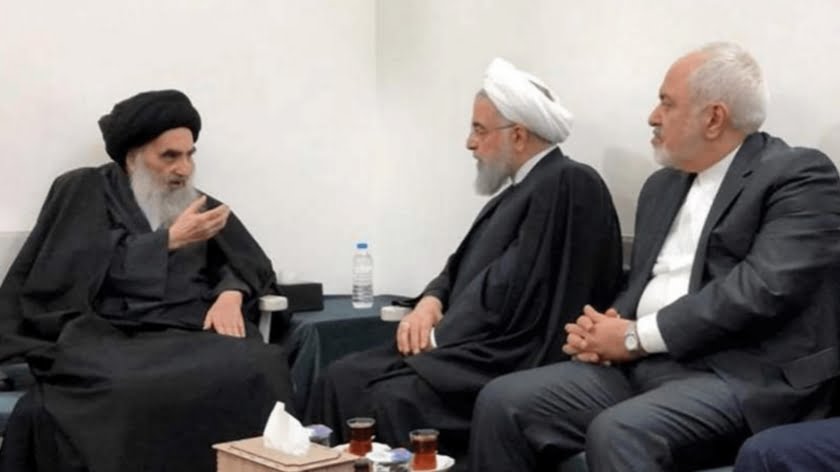The Global Consequences of South Asia’s Grand Strategic Reorientation
While it remains to be seen whether Pakistan will grotesquely transform from the “Zipper of Eurasia” into the “Faultline of Eurasia” like is feared, that scenario is still credible enough to seriously concern all stakeholders.
South Asia’s Central Role In The Great Bifurcation
The global systemic transition to multipolarity is leading to profound changes across the world, most notably the Great Bifurcation of the previously globalized system into the US-led West’s Golden Billion and the BRICS-led Global South. The complex processes connected with this megatrend are rapidly converging in South Asia, which isn’t by chance. This geostrategic region of Eurasia sits between the supercontinent’s western and eastern halves, thus placing it in the literal center of the earlier mentioned systemic transition that’s shifting the center of global gravity from the Atlantic to the Pacific.
The Prior State Of Affairs
Up until the latest US-provoked phase of the Ukrainian Conflict that broke out in late February, the state of affairs in South Asia was relatively simple to understand: the decades-long Indian-Pakistani rivalry had become part of the New Cold War between the American and Chinese superpowers. The comprehensive strengthening of military-strategic ties between America and India paralleled that of China and Pakistan. Furthermore, the US-exacerbated Chinese-Indian security dilemma climaxed during the clashes between those two in summer 2020 and thus seemed fated to forever doom them to rivalry.
Observers therefore reasonably expected that these dynamics would remain consistent across the coming future. Considering the pace and depth at which those two pairs’ strategic partnerships had developed over the past decade, and especially keeping in mind how the Chinese-Indian security dilemma appeared to have set those two Asian Great Powers on the path of irreversible rivalry that the US could easily manipulate to perpetually divide and rule them, this forecast made sense. It indeed appeared as though no serious surprises were in store for South Asia anytime soon.
India & Pakistan’s Diverging Geostrategic Roles
All that suddenly changed after the special military operation that Russia was compelled to commence in order to defend its national security red lines in Ukraine after US-backed NATO breached them. America immediately demanded that India condemn and sanction Russia in solidarity with the Golden Billion, though Delhi proudly rebuffed all such pressure in order to defend its objective national interests. That South Asian civilization-state’s grand calculations were to strengthen its strategic autonomy in the New Cold War by maintaining its multi-alignment between all relevant players.
Neighboring Pakistan attempted something similar, though it regrettably fell victim to a US-orchestrated but domestically driven post-modern coup that ousted its multipolar Prime Minister in early April as punishment for his similarly independent foreign policy, especially its Eurasian dimension and refusal to host US bases or at least grant transit rights to its drones. Although Islamabad officially maintains its policy of principled neutrality towards the Ukrainian Conflict, the reality is that its post-modern coup authorities have in practice predictably come under almost total American control.
Pakistan’s Path Back To Vassalhood Status
Not only did the Taliban (with whom Pakistan is nowadays in a dangerous security dilemma) accuse them of secretly granting transit rights to the US drone that attacked an alleged terrorist target in Kabul in early August, but they also reportedly shipped ammunition to Kiev through a transnational UK-led airbridge. Furthermore, Russia’s foreign spy agency seemed to have suggested an indirect Pakistani role in ISIS-K’s terrorist attack against its embassy in the Afghan capital, even if it was only their counterparts declining to share relevant intelligence ahead of time in order to cunningly let events unfold.
America then appeared to have rewarded its post-modern coup proxies for advancing its strategic interests after the State Department announced on Wednesday that it was approving the potential sale of up to $450 million worth of F-16 equipment that was frozen under the Trump Administration. In what wasn’t a coincidence, China and India agreed one day later to mutually disengage their military forces from the disputed frontier in what amounted to a major de-escalation of their security dilemma, which was due to Beijing appreciating Delhi’s proud display of strategic autonomy in the face of US pressure.
China’s Changing Perceptions Of South Asia
It was at this point that it became possible to speak about the grand strategic reorientation in South Asia, which is one of the most unexpected consequences of the recently accelerated global systemic transition to multipolarity. The prior state of affairs in this region that observers had hitherto taken for granted is indisputably changing after the US succeeded in restoring its previously lost influence over Pakistan following the post-modern coup that it orchestrated, which contrasts with the decline of US influence over India after Delhi refused to comply with its anti-Russian demands.
These parallel developments contributed to reshaping Chinese perceptions of the role it expected South Asia’s two most important countries to play in the emerging Multipolar World Order. Whereas Pakistan had previously been regarded as an asset and India as an obstacle, they’ve since switched places after the US successfully restored its hegemony over the first while failing to impose such over the second. Related factors were India publicly expressing hope of jointly pioneering the Asian Century with China and Russia unofficially suspecting Pakistan of indirect involvement in ISIS-K’s Kabul Embassy attack.
Tit-For-Tat But Without Zero-Sum Intentions (For Now)
In hindsight, it was inevitable that these variables would result in China seeking to counterbalance the US’ “poaching” of Pakistan by comprehensively improving relations with India, the latter of which proved its strategic autonomy and sincerely multipolar intentions. The timing of the US’ restored F-16 equipment deal with Pakistan and the Chinese-Indian military disengagement decision suggests that both superpowers accurately predicted the reversal of those South Asian states’ role in the New Cold War months prior and planned accordingly, hence why their efforts bore fruit around the same time.
Nevertheless, the grand strategic reorientation that’s underway right now in South Asia shouldn’t be misinterpreted as implying the creation of rigid blocs or any party’s immediate (key word) obsession with zero-sum policies. India will still retain close military-strategic ties with the US and continue to disagree with China on some issues for now, the same as Pakistan will retain such ties with China (especially economic-financial ones via CPEC) while probably continuing to be occasionally criticized by the US on certain domestic issues (even if this becomes rarer and much milder).
The Significance Of Strategic Forecasting
The importance in discussing the potential grand strategic reorientation in South Asia is to predict the impact that it could have on the larger trajectory of the global systemic transition to multipolarity, which can in turn enable decisionmakers to better prepare their countries for the most credible scenarios. With this in mind, just like the US’ “poaching” of Pakistan was responded to by China through its comprehensive improvement of ties with India, so too might that second pair’s progress on jointly pioneering the Asian Century be responded to by the US exploiting Pakistan as an obstacle.
So as not to be misunderstood, there are well-known preexisting fault lines between India and Pakistan (mostly connected to the unresolved Kashmir Conflict) that occasionally lead to the organic worsening of mutual tensions that each always blames the other for provoking. The US therefore doesn’t have to play any role in this dynamic since it naturally ebbs and flows from time to time. Nevertheless, it can’t be discounted that it might seek to encourage Pakistan to unilaterally violate the ceasefire that’s been in effect since February 2021 as part of a larger plan to manipulate its people’s perceptions about China.
Pakistan’s US-Encouraged Scuttling Of The Ceasefire
To explain, Pakistanis rightly regard China as their closest and most reliable partner anywhere in the world, though the optics of Beijing declining to back up Islamabad in the scenario that the latter unilaterally violates the ceasefire with tacit encouragement from Washington but publicly blames Delhi might not sit well with many. After all, everything connected to Kashmir has become an inextricable part of the Pakistani identity since independence 75 years ago, so quite a few of its people might be misled into being disappointed with China if Beijing doesn’t always support them on this issue.
Despite China’s stance towards the resolution of that decades-long conflict being very close to Pakistan’s, the People’s Republic is still consistently against any party disrupting the status quo. This means that Beijing wouldn’t be “betraying” Islamabad by not backing it up in the scenario that its post-modern coup regime unilaterally violates the ceasefire there with Washington’s encouragement. Nevertheless, many Pakistanis might still be misled since it’s widely considered patriotic to support their authorities on Kashmir no matter the context, which can provide a narrative opening for the US.
Arguments Against India Provoking Pakistan First
America’s information warfare objectives in this scenario are several, but before getting to them, it should be briefly be explained why it’s unlikely that India would be the one to unilaterally violate the ceasefire. Delhi is confident that the BRICS-led Global South has already concluded that the US successfully restored Pakistan’s prior vassalhood status and thus regards its neighbor as having reversed roles with it in becoming the greatest regional obstacle to multipolarity. Violating the ceasefire would also immediately halt the Chinese-Indian rapprochement and thus sabotage the Asian Century scenario.
By retaining the status quo, however, India is calculating that South Asia’s grand strategic reorientation would continue proceeding apace. That would in turn accelerate its rise as a globally influential Great Power capable of shaping the global systemic transition to multipolarity while Pakistan’s newfound regional isolation brought about by its post-coup regime’s strategic subservience to the US would intensify. By simply letting events naturally unfold along this predictable trajectory, India’s objective national interests would be advanced without any cost to itself, including to its improved reputation.
US Infowar Attacks Against The Chinese-Pakistani Strategic Partnership
Having clarified that, it’s now time to talk about the information warfare objectives that America would aim to achieve by encouraging its Pakistani proxies to unilaterally violate the ceasefire with India. Artificially manufacturing negative perceptions about China by manipulating the optics of that aforementioned scenario with respect to the false innuendo that the People’s Republic “betrayed” Pakistan by not backing it up during another round of tensions over Kashmir is first and foremost intended to improve the US’ standing in the public’s eyes by contrast.
This is meant to simultaneously make them more receptive to their post-modern coup regime’s increasing compliance with America’s regional strategic demands in parallel with artificially manufacturing grassroots support for those same puppets on a faux patriotic pretext. So as not to have the preceding insight misunderstood or spun by hostile information warfare forces, it’s not being implied that support for Islamabad’s position on the Kashmir Conflict isn’t truly a patriotic stance for Pakistanis. Rather, what’s being conveyed is that there are ulterior motives for provoking a crisis over it.
The Uyghur/Xinjiang Scenario
Those connected to America’s regional strategic demands include the post-modern coup regime turning a blind eye to the foreign-backed cultivation of anti-Chinese sentiment in society that weaponizes false perceptions about Xinjiang in order to artificially manufacture grassroots support for changing Islamabad’s position towards that non-existent issue over time. The purpose behind doing so is to weaken their strategic ties so that the US can then take over CPEC and thus place the Pakistani economy entirely under its hegemonic control, which would indefinitely perpetuate that country’s vassalhood.
The worst-case scenario would be that the US-backed post-modern coup regime ultimately provides sanctuary (and possibly various forms of support) to forces that China rightly considers to be terrorists, though that still appears far-off and can still be offset way before it happens. In any case, the point in drawing attention to this is to describe the sequence of events that would first have to take place, which would most likely be linked to manipulating the optics of China declining to support Pakistan in the event that the latter unilaterally violates the ceasefire with India after being encouraged by the US.
Keeping The Post-Modern Coup In Power
The second information warfare objective connected to the ulterior motive behind setting that scenario into motion is to artificially manufacture grassroots support for the post-modern coup regime on a faux patriotic pretext. Former Prime Minister Khan wildly succeeded in exposing his replacements as American puppets in the eyes of most Pakistanis, which explains why he inspired the largest peaceful protests in his country’s history and then led his party to a landslide victory in the Punjab by-elections. Even if the post-modern coup regime imprisons or kills him, God forbid, his message will still live on.
This means that the socio-political basis of the US’ hegemonic influence over its newly restored Pakistani vassal will perennially remain unstable, which they fear could in the worst-case scenario (from their perspective) ultimately make a modern-day manifestation of Iran’s anti-American revolution inevitable. The US could easily avert this by ordering its puppets to hold free and fair elections as soon as possible in order to serve as a democratic pressure valve, though that would return their ousted leader to power, after which he’d liberate Pakistan from its newly restored vassal status.
Former Prime Minister Khan isn’t anti-American like his domestic and international enemies have maliciously misportrayed him, but pro-Pakistani, which is why he’d almost certainly seek to replicate neighboring India’s balancing act in the New Cold War by simultaneously cultivating mutually beneficial relations with both the US-led West’s Golden Billion and the BRICS-led Global South. That, however, is absolutely unacceptable for America since the declining unipolar hegemon orchestrated his overthrow precisely because of its grand strategic designs in the New Cold War related to impeding multipolarity.
From The “Zipper Of Eurasia” To The “Faultline Of Eurasia”
The US will never voluntarily give up its newly restored hegemony over Pakistan since it intends to exploit its traditional vassal for the purpose of obstructing the emerging Multipolar World Order in South Asia through the means that were earlier explained. It also goes without saying that America aspires to have its puppet actively destabilize Afghanistan as well, which would indirectly harm the security interests of all responsible neighboring stakeholders and Russia. If Pakistan ultimately hosts violent Uyghurs, then the global pivot state could disrupt multipolarity in the east, west, and north.
That’s precisely the potentially game-changing outcome that American wants to advance in the New Cold War through its “recapture” of Pakistan and the resultant grand strategic reorientation that it catalyzed in South Asia. The purpose is to transform its host into a weaponized unipolar platform for exporting destabilization to South, East, Central, and West Asia as the “Faultline of Eurasia” instead of letting it retain the positive multipolar role that it previously played in bringing those regions together as the “Zipper of Eurasia” via CPEC+ as explained in the author’s PhD thesis on Russian-Pakistani relations.
Scenario Offsets
For as dire as all of this sounds, it still isn’t inevitable. “The Power Of The Pakistani People Will Defeat Their Unpopular Imported Government” if free and fair elections are held as soon as possible on the off chance that members of the multipolar school of thought within the Pakistani Establishment somehow or another convince their more powerful pro-American peers to do so for patriotic reasons. After all, the return of former Prime Minister Khan to power in that scenario wouldn’t lead to any “anti-American” outcomes but purely pro-Pakistani ones considering his multipolar worldview and balancing intentions.
Even in the dark scenario that he’s jailed or killed, God forbid, his message will still live on and inspire his compatriots to continue their quest to liberate Pakistan from the chains of neo-imperialism. Banning the largest movement in their country’s history since independence, let alone persecuting its millions of members or worse God forbid, would only further weaken the already very fragile socio-political basis upon which the US’ restored hegemony there is built. This means that its collapse is fated with time, though it’s unclear whether it’ll be peaceful and/or happen before too much regional damage is dealt.
Concluding Thoughts
Upon reflecting on everything that’s been shared in this analysis, there should now be no doubt that a grand strategic reorientation is actively underway in South Asia. It was catalyzed by the US’ “recapture” of Pakistan following the post-modern coup that it orchestrated and taken to its next level by the Chinese-Indian rapprochement that eventually occurred in response. While it remains to be seen whether Pakistan will grotesquely transform from the “Zipper of Eurasia” into the “Faultline of Eurasia” like is feared, that scenario is still credible enough to seriously concern all stakeholders.







